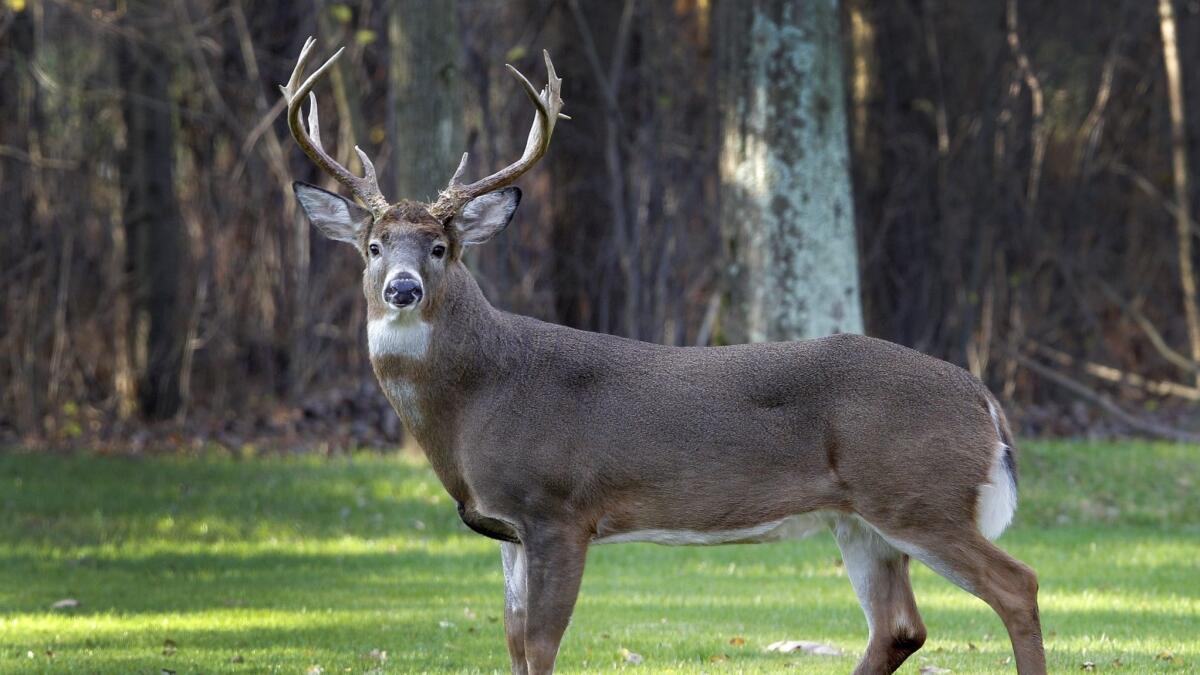Planning on eating roadkill because of a California law? Drop that possum

- Share via
The recipe for a “highway hash” includes onions, potatoes, stalks of celery and, oh deer ... your choice of roadkill. But before you go preparing this literal street food dish, there are some things you should know.
Californians may have heard about a new state law that would make it legal to collect or possess roadkill animals starting Jan. 1, but state officials say that’s not the case.
So don’t be a deer in the headlights, and take heed of this warning by David Bess, deputy director of the California Department of Fish and Wildlife and chief of the Law Enforcement Division:
“There is no collection or utilization program in place. We are trying to avoid any confusion by misinformed citizens who think it is lawful to collect roadkill animals.”
State officials say anyone caught collecting or possessing animals that have been killed in traffic collisions could face a $1,000 fine and six months in jail.
“It’s still against the law,” said Department of Fish and Wildlife Capt. Patrick Foy. “Nothing’s changed; there’s no difference from today and a week from today.”
Confusion over the Wildlife Traffic Safety Act, SB 395, began in October when Gov. Gavin Newsom signed the legislation into law. The bill, sponsored by state Sen. Bob Archuleta (D-Pico Rivera), amends current state law to allow drivers who fatally strike a deer, elk, antelope or wild pig to take the animal home and cook it. The bill would also let people not in vehicles who simply stumble upon a carcass keep it for food.
But the new law only authorizes the California Fish and Game Commission to establish a pilot program no later than 2022 that would permit and regulate where people can collect salvageable wild game meat and take it home. The commission would also receive input from other state agencies such as the Department of Transportation, the Highway Patrol and the Office of Environmental Health Hazard Assessment.
A person seeking to obtain a “wildlife salvage permit” would be required to report information that would help track details about wildlife-vehicle collisions in the state. That information, collected by Fish and Wildlife officials, would be used to compile data on wildlife-vehicle collisions to support conservation efforts.
A report published by the UC Davis Road Ecology Center last year shows that more than 56,000 animal carcasses were found on local roads and state highways from 2009 to 2017.
Fraser Shilling, co-director of the center, said deer are often being struck by vehicles because they’re using the roadways as a protection barrier from predators.
“Predators don’t like highways,” Shilling said. “So a lot of deer — and this is true of elk — they seem to hang around highways because they’re escaping their natural predators, and because they have no way of determining that vehicles are predators, they don’t avoid that risk.”
Shilling, who supports the bill, said a wildlife salvage permit program is an effective tool not just because it provides important data that can be used for conservation efforts, but because it could also help improve traffic safety. Additionally, salvaging wildlife meat prevents waste.
According to SB 395, more than 20,000 deer are hit by cars on California’s roadways annually.
“This potentially translates to hundreds of thousands of pounds of healthy meat that could be used to feed those in need,” the bill says.
Roadkill on the menu is nothing new in some parts of the country: Idaho, Oregon, Washington and Alaska are just a few states that have programs allowing citizens to salvage wildlife meat.
There are books, websites and YouTube channels teaching proper ways of butchering large game and providing an assortment of recipes for roadkill meat. Among them is “The Original Road Kill Cookbook” written in 1987 by Buck Peterson. The quirky book includes recipes such as “windshield wabbit” and “highway hash.”
“Remember, game meats can be used in all your traditional recipes, with possible exceptions of those that don’t already have them, like tapioca pudding,” he writes.
Peterson, who lives in Minnesota, said he got the idea for the book while conducting surveys across the U.S. about roadkill. In Montana, he said, wildlife game was disappearing from roadways before state officials could get to it. Cutting up and processing an animal takes energy, and eating it can have some unusual consequences at first.
“Gastric distress will clear a room,” he said, chuckling. “It’s like eating your mother-in-law’s meatloaf.”
Still, he said he prefers wildlife meat to anything else.
People for the Ethical Treatment of Animals agrees, saying that if people must eat animals, then roadkill is a better option than meat sold at the store.
“Eating roadkill is healthier for the consumer than meat laden with antibiotics, hormones and growth stimulants, as most meat is today,” the organization says on its website, adding that the animals were killed in a more humane manner. “Perhaps the animals never knew what hit them.”
Under the new law in California, the program will only apply to deer, elk, pronghorn antelope or wild pig; it does not cover any animal protected by the California Endangered Species Act. The program will also be limited as to certain regions and counties.
After the program launches, it will take some time to see how well it does. Until then, the highway market remains closed.
More to Read
Sign up for Essential California
The most important California stories and recommendations in your inbox every morning.
You may occasionally receive promotional content from the Los Angeles Times.










